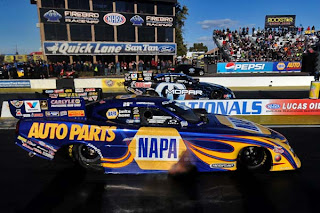http://www.rei.com/product/857591/novara-arkham-bike-2014


 Large air moving fans used in air cooled heat exchangers or
cooling towers sometimes “wind-mill” while powered off. Wind-milling occurs when back drafts cause
fans to rotate backwards when out of service.
This can present safety concerns to personnel working in the proximity
of the fans. It can also damage fan
structures and belt drive systems when the units are powered on and the
counter-rotating fan inertia energy is quickly dissipated and absorbed by the structure
and power transmission system.
Large air moving fans used in air cooled heat exchangers or
cooling towers sometimes “wind-mill” while powered off. Wind-milling occurs when back drafts cause
fans to rotate backwards when out of service.
This can present safety concerns to personnel working in the proximity
of the fans. It can also damage fan
structures and belt drive systems when the units are powered on and the
counter-rotating fan inertia energy is quickly dissipated and absorbed by the structure
and power transmission system. |
| Gates 2012 Power Transmission Products Catalog |
 Meter repairs and certifications must be initiated through authorized Gates industrial distributors. Meters cannot be returned to Gates directly. Your local distributor is familiar with the returning process and will be happy to provide assistance. They will provide quotations for repairs or certifications and handle the paperwork and shipping. Go to http://www.gates.com/industrial/distributors to use our distributor locator tool.
Meter repairs and certifications must be initiated through authorized Gates industrial distributors. Meters cannot be returned to Gates directly. Your local distributor is familiar with the returning process and will be happy to provide assistance. They will provide quotations for repairs or certifications and handle the paperwork and shipping. Go to http://www.gates.com/industrial/distributors to use our distributor locator tool. The win is Capps' 24th win with DSR and the 39th of his NHRA pro career.
Capps with crew chief Rahn Tobler and assistant John Collins produced four runs Sunday between 4.037 seconds and the 4.064 he ran in the final.
“This new car really likes to be planted early, and so Tobler (Crew chief) has been working on a new clutch package,” said Capps. “In (the final qualifying session Saturday), we finally found out what it really liked. And when you give Tobler a new combination that works, he’s going to ‘bracket car’ it to death,” he said of Tobler’s penchant for consistency.
The combination of being runner-up at Pomona and Capps’ win Sunday moved the NAPA team to first in the Mello Yello standings after two of 24 events.
“We’re starting to feel like we’re getting into the same rhythm that we were in last year when we went to six finals in a row,” Capps said.
Schumacher's victory in Top Fuel was his fourth career NHRA Arizona Nationals at Firebird International Raceway and the 70th event title of his career.
The win is Capps' 24th win with DSR and the 39th of his NHRA pro career.
Capps with crew chief Rahn Tobler and assistant John Collins produced four runs Sunday between 4.037 seconds and the 4.064 he ran in the final.
“This new car really likes to be planted early, and so Tobler (Crew chief) has been working on a new clutch package,” said Capps. “In (the final qualifying session Saturday), we finally found out what it really liked. And when you give Tobler a new combination that works, he’s going to ‘bracket car’ it to death,” he said of Tobler’s penchant for consistency.
The combination of being runner-up at Pomona and Capps’ win Sunday moved the NAPA team to first in the Mello Yello standings after two of 24 events.
“We’re starting to feel like we’re getting into the same rhythm that we were in last year when we went to six finals in a row,” Capps said.
Schumacher's victory in Top Fuel was his fourth career NHRA Arizona Nationals at Firebird International Raceway and the 70th event title of his career.
 “The fans got their money’s worth on that run,” Schumacher said. “It was pedal, pedal, lift, pedal, straighten the car out, do it again. I loved it. It’s cowboy stuff. I enjoy that kind of race more than the record-setting ones we’ve had over the years. That still proves you have to put a driver in these cars and drive these things. We ran incredibly well all weekend. All you have to do is be a machine and do the same thing, win rounds and win rounds, but those runs are the ones that are just fun.
The Top Fuel and Funny Car classes use Gates Poly Chain belts to drive the superchargers necessary to achieve the enormous horsepowers required to make the 1000' runs in 4 seconds or less. The Poly Chain belts are specifically engineered for the extreme conditions (shock loads, high loads, high accelerations, high speeds) of the application.
“The fans got their money’s worth on that run,” Schumacher said. “It was pedal, pedal, lift, pedal, straighten the car out, do it again. I loved it. It’s cowboy stuff. I enjoy that kind of race more than the record-setting ones we’ve had over the years. That still proves you have to put a driver in these cars and drive these things. We ran incredibly well all weekend. All you have to do is be a machine and do the same thing, win rounds and win rounds, but those runs are the ones that are just fun.
The Top Fuel and Funny Car classes use Gates Poly Chain belts to drive the superchargers necessary to achieve the enormous horsepowers required to make the 1000' runs in 4 seconds or less. The Poly Chain belts are specifically engineered for the extreme conditions (shock loads, high loads, high accelerations, high speeds) of the application.